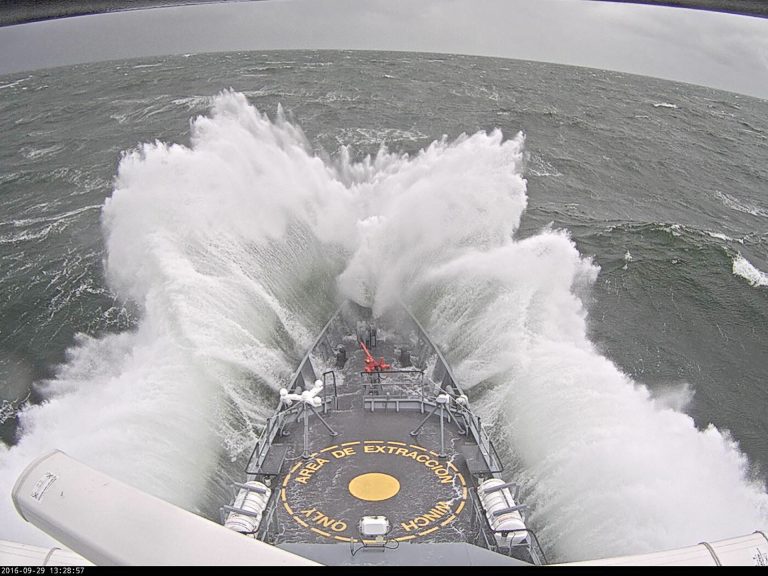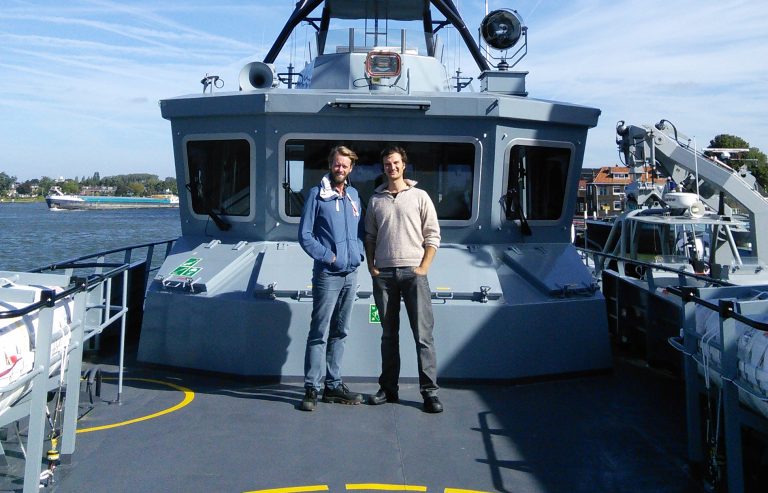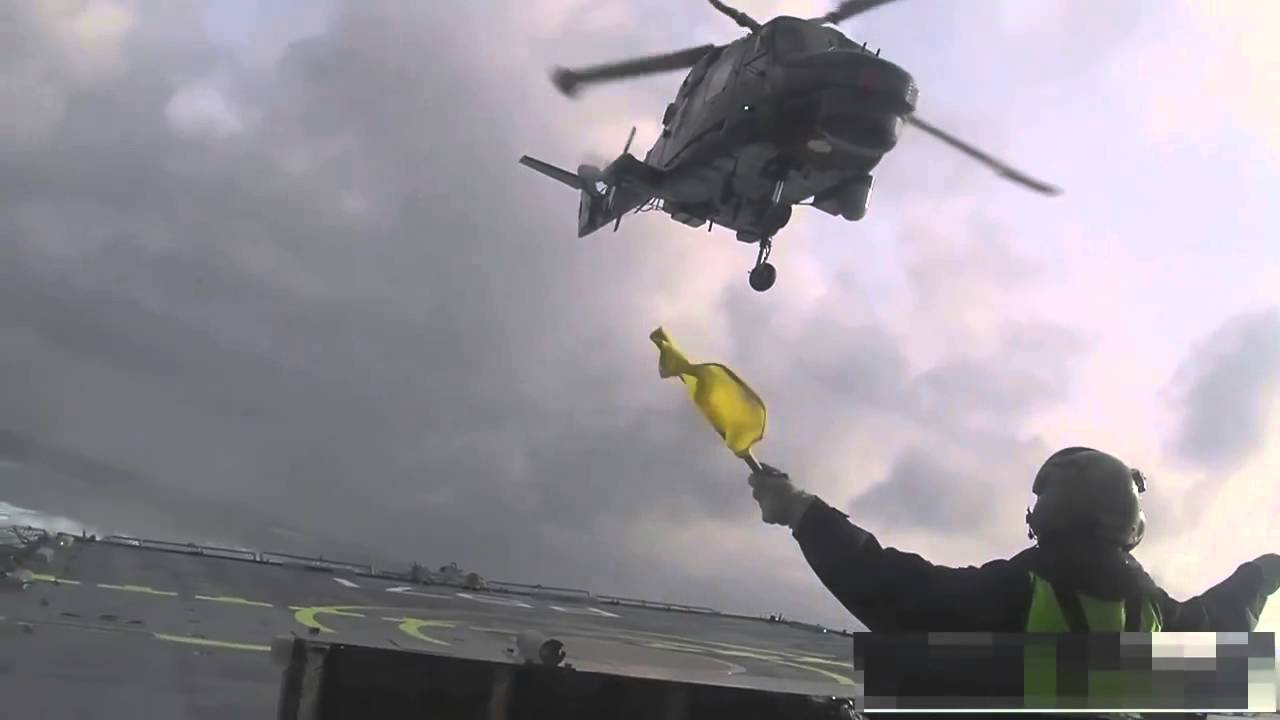A couple of days after his graduation, Dr Peter Naaijen received the award for the best innovation in offshore energy for his wave radar. Pity he couldn’t be at the gala dinner.
 Ship ploughing through wave (Photo: Peter Naaijen)
Ship ploughing through wave (Photo: Peter Naaijen)Try landing a helicopter on a heaving ship deck, or transferring personnel or cargo from vessels onto platforms, wind turbines or other ships during rough seas.
Naaijen expects that the wave radar that he developed during his PhD research at the Faculty of Mechanical, Maritime and Material Engineering will allow offshore operations to continue in rougher seas. Naaijen explains: “Suppose you need two-minute intervals with waves of under three meters. At sea state 4 (moderate sea, ed.) the operation will probably be cancelled because of the risks associated with three-metre waves. But in practice, 93 percent of the time there will be two-minute intervals with waves under three metres. Now, if you know exactly when the high waves will occur, you can plan around them and still do the operation. The wave radar offers potential operational savings because ships can go out in higher sea states and will spend less time waiting along the quay.”
Judging from the Offshore Energy innovation award, the maritime sector shares Naaijen’s expectation of savings through wave watching.
So how does it work? Naaijen uses data from the ship’s navigational radar to scout for incoming waves. The radar transmits electromagnetic waves that reflect off steel structures and transmits water waves. The radar antenna receives the reflected signal and produces an image of the ship’s surroundings. The default setting filters out reflections from water waves. Naaijen isolates the raw radar data to intercept wave information before it gets filtered out. Theoretically, the system can look five minutes ahead. In a practical test, a time horizon of 2.5 minutes has been demonstrated.
Naaijen combined the science of wave watching with the existing theory of how certain floating structures respond to incoming waves. This allows him to predict a ship’s movements for the next couple of minutes. During a test drive on a 100-metre offshore maintenance vessel, he measured a large correlation (between 0.77 and 0.86) between the predicted and the measured ship movements.
 Ship ploughing through wave (Photo: Peter Naaijen)
Ship ploughing through wave (Photo: Peter Naaijen)The offshore company Allseas is the launching customer for the wave radar. According to Naaijen, it has five ships with direct potential for the system. One of All Seas’ activities is the laying of pipelines, which involves the transfer of pipes from one ship to another. During these operations, it is essential to know when best to land the cargo.
 Peter Naaijen and Karel Roozen without the waves. (Photo: Next Ocean)
Peter Naaijen and Karel Roozen without the waves. (Photo: Next Ocean)Naaijen’s colleague and co-entrepreneur Karel Roozen received the innovation award at the Offshore Energy conference gala night for their start-up company, Next Ocean. The jury said: “In our view, this is an excellent innovation by new kids on the block. The problem of anticipating severe wave conditions impacting operations at sea is paramount. The innovation includes analytics to come up with significant cost savings, improving the safety of operations and making better use of assets at sea. It is a nice tool and easy to understand.” Naaijen fell victim to the flu shortly after his defence and missed the gala.


